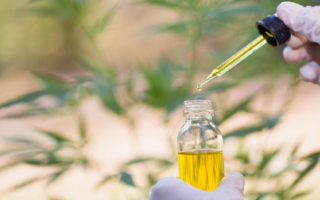When you get sidelined by an injury, you want to know what to expect. Whether you’ve sprained an ankle or thrown out a back, it can cause you to miss school, work, and other activities or commitments. They can have a significant impact on your life, not to mention there’s always the possibility that you become someone else’s burden as you nurse yourself back to normal. No one wants that. Knowing how long you can expect to be on crutches, resting, or taking medicine to reduce swelling goes a long way in helping set expectations for yourself and your recovery. It also makes it easier to tell the boss, friends, or the coaches how long you’ll probably be out of commission or not operating at full force. Here’s some helpful information about some common injuries and what you can expect in terms of healing times.
Recovery Timelines
Probably the first thought that goes through your mind when you get injured is, “Am I okay?” You’ll do a check of the damage and do your best to get good treatment. Then, you want to know how long it’s going to take until you’re back on your feet and one hundred percent. Thankfully, we all experience very common injuries, so we’re able to collect enough data to estimate recovery time. Here are some common injuries:
Read more: Do’s and don’ts for IVF
Ankle Sprain – This is one of the most common injuries in the world. You’re walking along the street and you step off a curb and suddenly you feel a jolting pain up your leg. That, or you’re playing basketball and fall awkwardly on someone else’s shoe. A sprained ankle can happen in a million ways. Not all ankle sprains are the same severity, so the recovery window can be anywhere from 6-12 weeks.
Shin Splints – Runners know and hate shin splints with a passion. Shin splints is an injury that occurs because of cumulative stress on your shin bones. Runners who are out there pounding the pavement every day can develop them when they run too much or try to pump up the intensity of their workouts. Shin splints take 2-6 weeks to heal, which can seem like an eternity to regular exercisers.
Knee Injuries – Knee injuries are one of the most common injuries in sports. Knees take a lot of stress from athletes. All the twisting, jumping, and running puts them at risk. You can tweak or sprain your knee, or you can tear a critical ligament like your ACL. A minor tweak will set you back a few weeks, but an ACL tear, meniscus tear, or other serious injuries could sideline you a year and require surgery and intensive physical therapy.
Broken Bone – Bones can break if you fall or there’s sudden impact like in a car accident. Of course, you have different sized bones, so healing times will be different. Breaking your toe, for example, only requires rest and stabilization. There’s not much more you can do. You can still walk around and get work done. Break your femur, though, and it’s very serious due to the amount of potential blood loss. A fracture in larger bones typically takes around 12 weeks to heal, while smaller bones recover much faster.
Back Sprain – For older folks, back sprains are very common. Most middle-aged or older people know the pain of bending down to pick something up and hearing their back “click” as they come back up. The pain from a back sprain, or thrown back, can be excruciating, but thankfully recovery time is relatively short at around 1 week.
What You Can Do to Speed Up Recovery
There are things you can do to help your injuries recover quickly so you can get back to exercising, working, or whatever else you’re dying to do. The most common treatment for minor injuries is RICE, which stands for rest, ice, compression, and elevation. All of these four strategies are aimed at controlling inflammation, swelling, and pain. The faster you can ice, compress, and elevate an injury, the better. It will prevent swelling from settling in that limits your range of motion and slows your recovery.
Nutrition is also a critical piece of injury recovery. Make sure you’re drinking plenty of water, eating the right foods, and taking good supplements. Getting enough protein, vitamins B, C, D, and A, and other supplements like zinc and magnesium can control inflammation and improve your overall health.
Read more: What Is Gynecomastia And How Can It Affect You?
Much research is being done in the scientific communities on peptide and healing. One of the most popular peptides being researched is called TB-500 also known as Thymosin Beta-4. TB-500 peptide has been shown to help heal injuries faster according to recent studies. Scientific research related to TB-500 conducted on animals suggests that it may offer accelerated healing properties that would make it a good candidate in the future as a possible medical benefit to help the injured. This peptide has not yet been approved by the FDA for human use.
Preparation is Key
Knowing what injury is most likely to take you out of commission and what to expect can help you prepare the best response. The last thing you want is to be left with an injury and not know what to do. If you’re ever in doubt, seek medical attention to get expert advice on what you should do to treat an injury. We all want to shrink the time we’re in pain or unable to function as much as possible.




